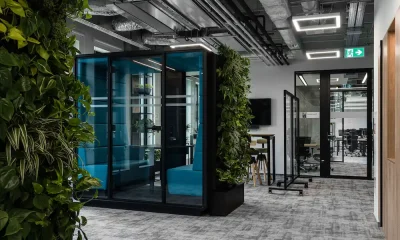General
How Distractions Are Hampering Productivity At Work

Are you easily distracted even when you’re doing something you enjoy? If so, you’re in good company!
A Harvard study revealed our minds wander off about 47% of the time.
Learning to concentrate for more extended periods will improve your performance and achievements at work, sports, and leisure.
Some people are more susceptible to distraction than others too. One cause may be that you’ve got a large brain! Yes, too much grey matter in some brain regions may be how your attention is easily diverted.
Younger people’s brain development is likely to affect their concentration levels.
Plus, there’s always a lot to distract us now we’re connected via our smartphones to news and social media 24 hours a day.
Smartphones
Companies work tirelessly on improving worker productivity, and removing distractions is a core part of the process. For example, you may be with an organization with policies for phone use and social media access.
Over the past decade, there have been many studies on smartphones in the workplace.
In 2016 55% of employers said smartphones hampered worker productivity. 66% percent of workers admitted to using their phones throughout the day.
In the same study, eight out of ten workers said their phone doesn’t distract them.
Companies blocking access to sites during work hours and some going as far as banning smartphone use have since had to roll back these policies.
Smartphones still distract workers, but they are now more readily accepted by companies, albeit reluctantly.
There’s no point fighting a losing battle -so rather than banning employees from using smartphones at work, businesses are focusing on positive benefits, including:
- Staff retention
- Contact outside of work hours, especially in an emergency
- Improving productivity when used to catch up on emails or work outside of work hours
Smartphone use is expected to increase 25% by 2025.
Did you know people spend an average of 4.8 hours daily on their mobiles?
In some countries, it’s higher, e.g., South Korea and Brazil, where the average daily mobile use is more than five hours. This is one distraction that isn’t going away, and businesses need to get smarter with how they encourage better habits to improve worker productivity.
Tip
Businesses can assist their workers in managing their use of smartphones during work hours by getting them to take the following actions:
- Turn off notifications – alerts from apps
- Switch phone to airplane mode – stops mobile connectivity
- Turn off mobile data to distracting apps
- Use the don’t disturb or sleep setting for longer, i.e., set it to turn off an hour after you start work
- Set up calendar alerts for activities like reading emails, watching news, sending text messages
Open Plan Environment
96% of workers in this study want to change where they work. Not the business but the workplace. 65% want to work full-time, and 31% want a hybrid arrangement. The open-plan layout may be ideal for management’s staff oversight, but it’s a poor design for productivity.
Conversations
Workstation clusters group workers in close contact with their colleagues.
There may be as many as 50 or 100 people per floor in an open-plan environment. Everyone can hear every word spoken. Clockify says on average, workers experience around 56 interruptions a day. Break that down, and it’s eight interruptions every hour.
An interruption every 7.5 minutes
With all the interruptions, unproductive time spent refocusing on work is two hours a day. Worker productivity per day is less than three hours. Workers want to get more done, hence working remotely for all or part of the week.
Temperature
Did you know women need more warmth than men? Women will wear more layers and maybe coats if they have a room temperature lower than 22°C, which is the optimum room temperature for a 40-year-old 70 kg male!
If your workplace is mostly women,, their requirements are 3°C (5.4F) warmer than their male counterparts.
If your office is too cold, workers will leave their desks more to make hot drinks. Similarly, workers will be lethargic and less productive if the office is too warm!
Tip
Make sure the air conditioner is working at an optimum temperature for work. 22°C (71.6F) is where you want your thermostat. What you probably don’t know is how this temperature was deemed optimum.
Plus to reduce chatter and movement distractions, embrace remote working so half the number of workers are in the office simultaneously. This also allows for more space between workstations. Also, bring in nature.
Plants can provide better air conditioning, and when strategically placed, they can also use privacy, so workers are less distracted by colleagues moving around the floor.
Stress
Workplace stress reduces worker productivity and can seriously damage their health.
Stress is a silent killer. However, there are improvements to the company culture and physical surroundings that can improve work-life balance, including:
- Set up a break-out room for naps, and meditation
- Encourage more breaks during the day
- Fewer hours in the office – e.g. remote working
- Encourage staff to take vacations
Workers also have a responsibility to manage their stress levels through a commitment to doing the following:
- Sleeping regular hours
- Daily exercise
- Eating well
Final Thoughts
Distractions are all around us at work and at home. As a business owner, continually review and improve whatever hinders your workplace productivity. Plus, work on your company culture and empower your staff to dig deep and bring their best self to work, so it’s a win-win outcome.






